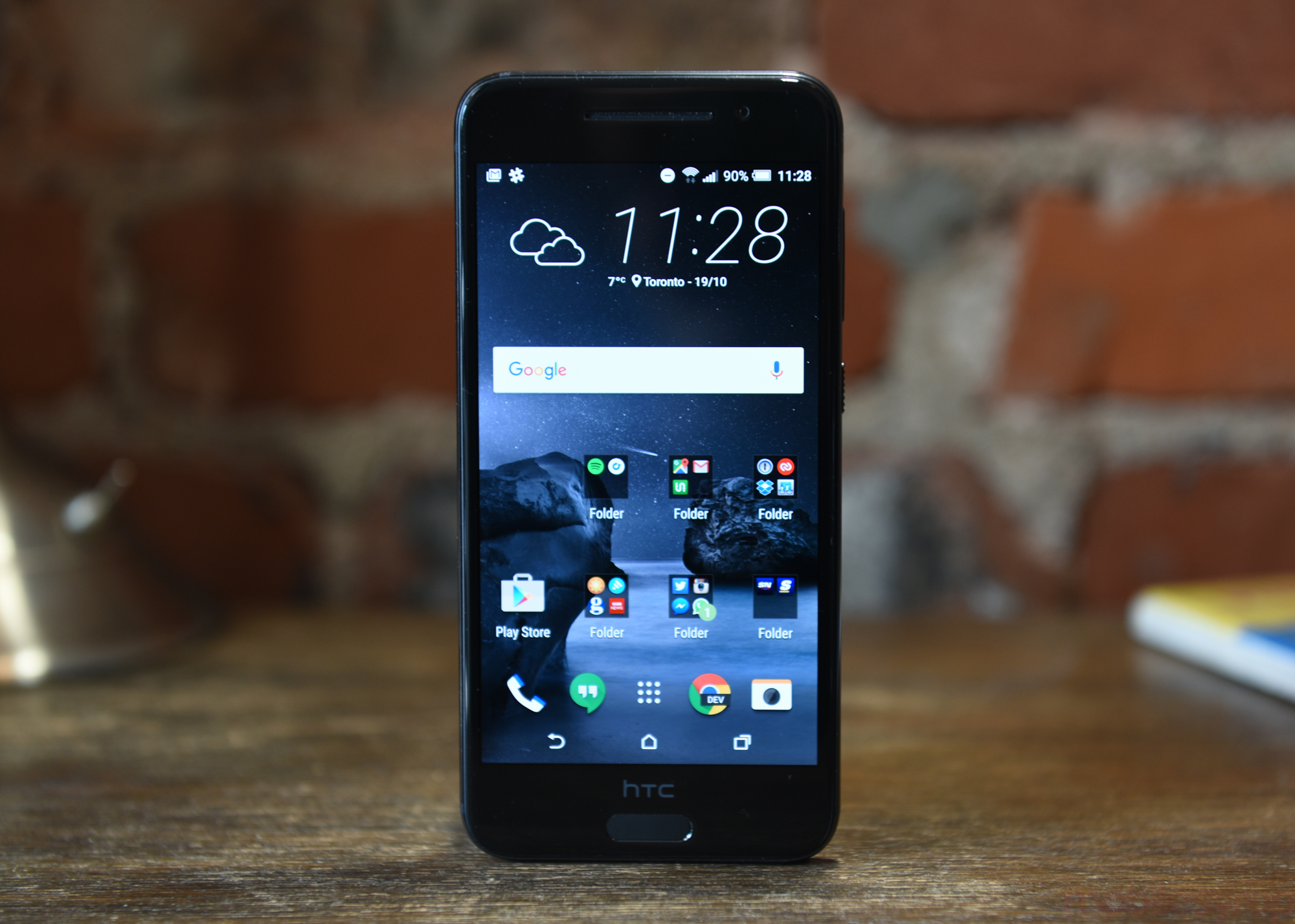
I probably don’t need to say this, but the HTC One A9 looks an awful lot like an iPhone 6.
Whether driven by sheer arrogance or a desperate need to find its way during difficult times, the HTC One A9 is cloyingly, unabashedly, an iPhone 6 copy. Yes, items like the camera sensor and volume buttons may be located in different places, and there’s a useful LED notification light on the front of the device (something for years iPhone users have been clambering) but this is by all accounts HTC’s iPhone.
But is that a problem? Unlike myriad copycats from unknown manufacturers meant to flood the market with low-quality clones, the HTC One A9 makes a strong claim for an objectively good design, where metal and glass gently meet at a meandering curve, and where a small, high-resolution display comports itself well for people who want a phone with ample real estate that works in one hand.
During a briefing with HTC’s Nigel Newby-House, executive director of portfolio strategy, I got the impression that HTC thinks it has the moral high ground, since it ventured into metals far before Apple did. Curiously, when HTC was one of the only OEMs selling metal smartphones, it was also selling them in huge numbers, eclipsing both Samsung and Apple in quarterly sales.
We know now that didn’t last, and Samsung’s design reinvention, which came earlier this year, was also met with more than a few accusations of mimicry. Indeed, looking at the iPhone 6s, HTC One A9 and Samsung Galaxy S6 from the same bottom angle suggests that, if both Android OEMs did not copy Apple, there is indeed nothing new under the sun and we should all just move on to other projects.
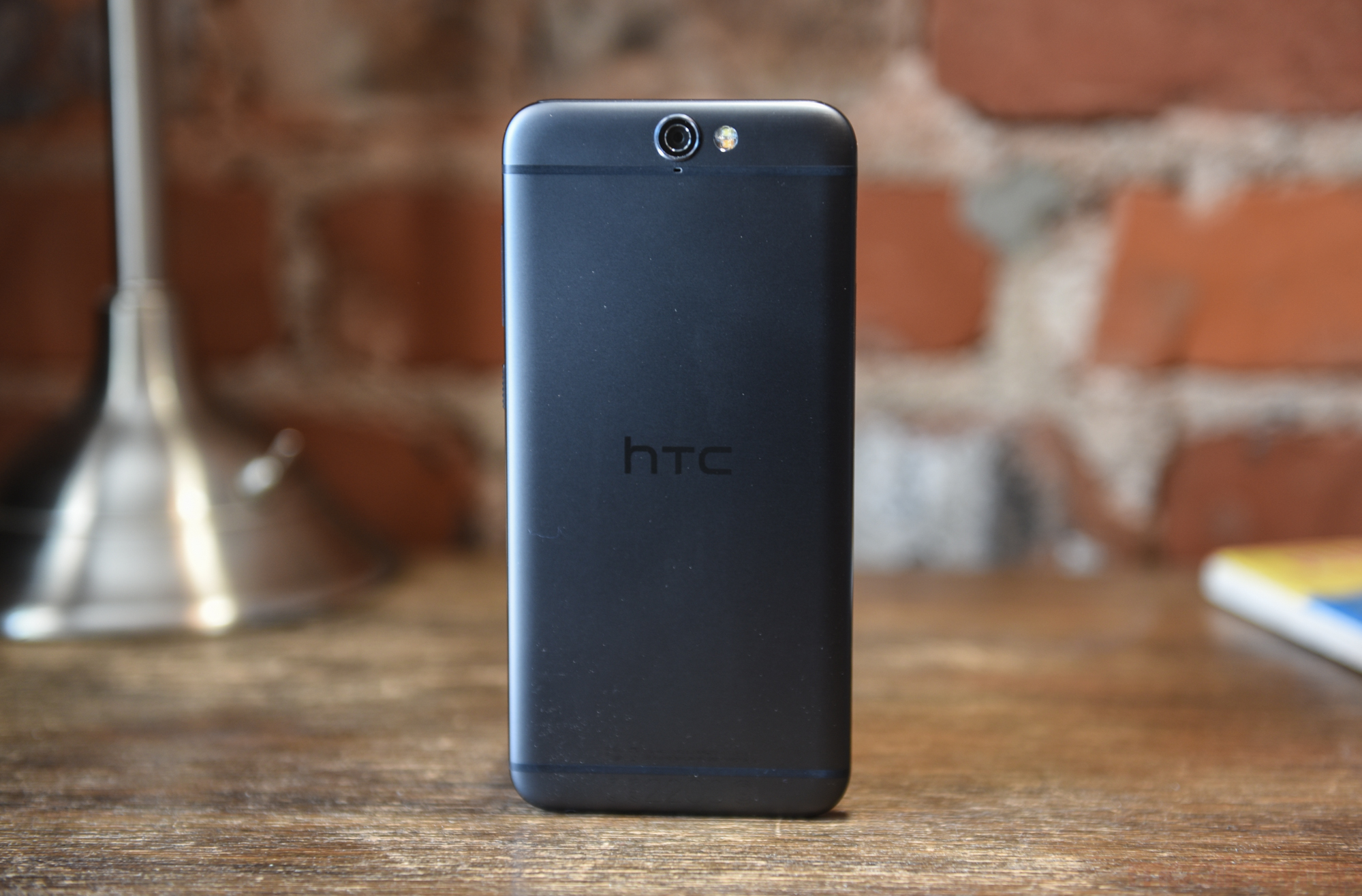
Specs
- Android 6.0 Marshmallow with HTC Sense
- Qualcomm Snapdragon 617 SoC (4x 1.5Ghz, 4x 1.2Ghz cores) w/ Adreno 405 GPU
- 5-inch 1920×1080 pixel AMOLED display, covered w/ Gorilla Glass 4
- 3GB LPDDR3 RAM
- 32GB internal storage (w/ microSD slot)
- 13MP rear camera sensor w/ F2.0 lens, optical image stabilization (OIS)
- UltraPixel (4MP) front-facing camera w/ F2.0 lens
- 1080p video capture (front and back cameras)
- 2,150mAh battery w/ Quick Charge 2.0 (QC 3.0 with upgraded software)
- Dual-band 2.4Ghz/5Ghz WiFi (a/b/g/n/ac), Bluetooth 4.1
- Single, down-facing speaker w/ Dolby Audio + Hi-Res 24-bit/96Khz audio support
- Front fingerprint sensor
- 145.8 x 70.8 x 7.3mm
- 143 grams
- LTE Bands 2, 3, 4, 5, 7, 12, 13, 17, 29
- Unlocked price: $549 CAD from HTC.com/CA
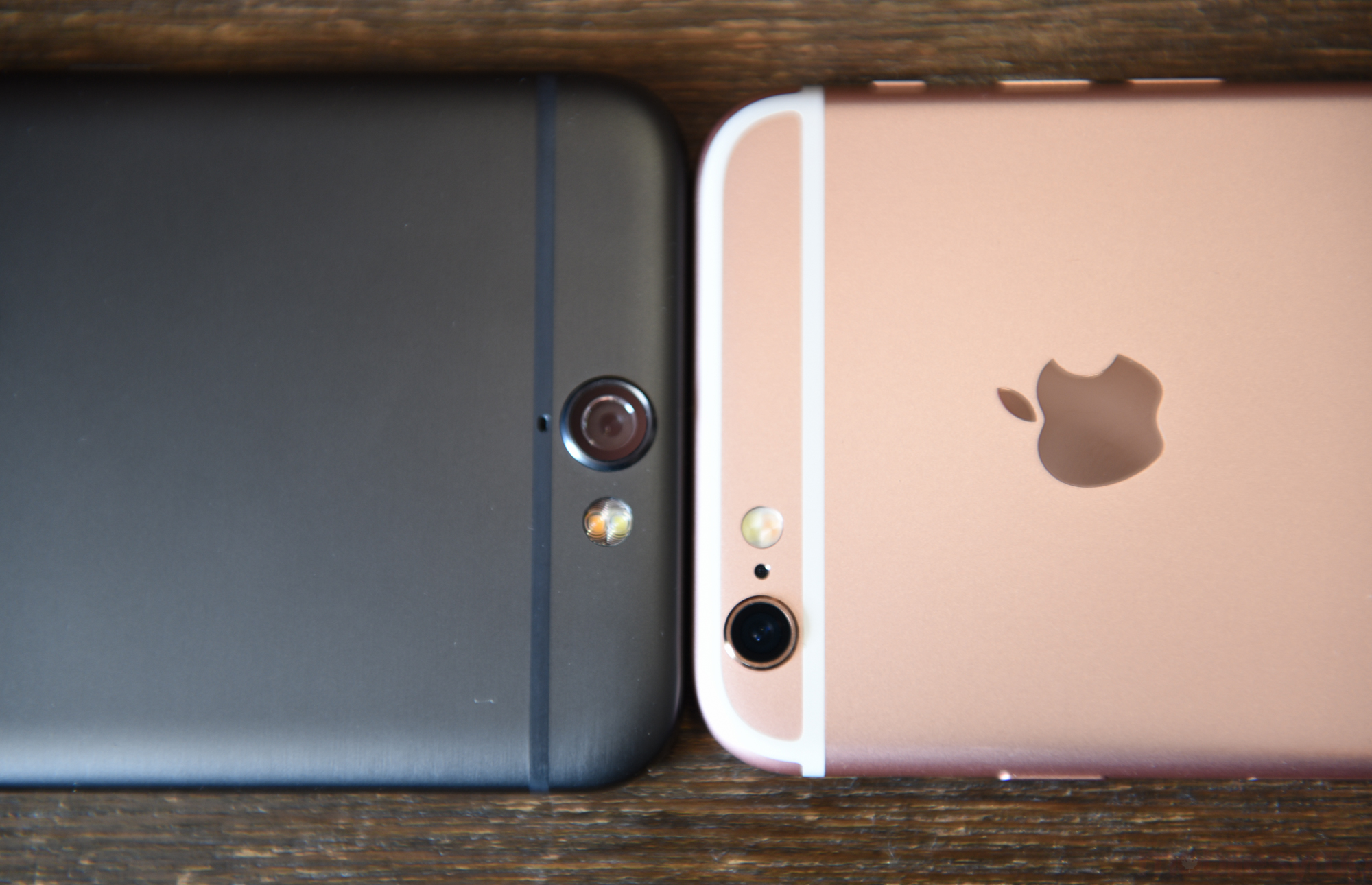
The Strategy
The One A9 cannot be viewed as an isolated product; it has to be seen in the context of HTC’s recent troubles. The company has lost market share every quarter for nearly two years, and has reported net losses in all but two of its balance sheets during that time.
Its 2013 flagship, the One M7, was released to great critical acclaim, but didn’t meet sales targets. Its follow-up, the M8, featured gimmicky camera features and an awkward, slippery casing that proved regressive in many respects. And this year’s One M9 failed, by HTC’s own admission, to make changes significant enough to retain fans of its previous metal-clad devices, forcing the company to rethink its strategy.
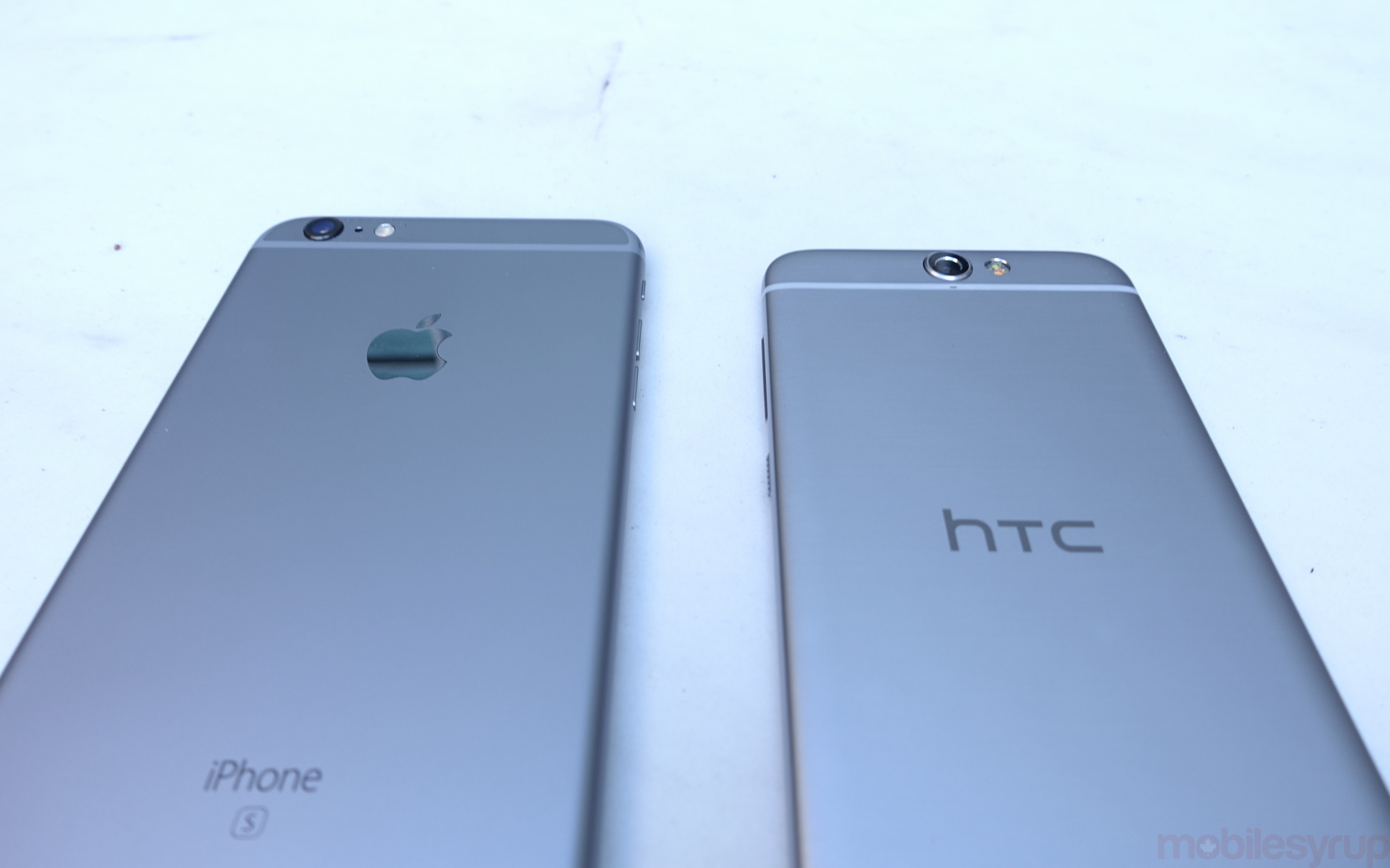
According to Newby-House, the One A9 is a product not of a direct cribbing from Apple’s playbook, but a deliberate mashup of the aluminum One and plastic Desire line.
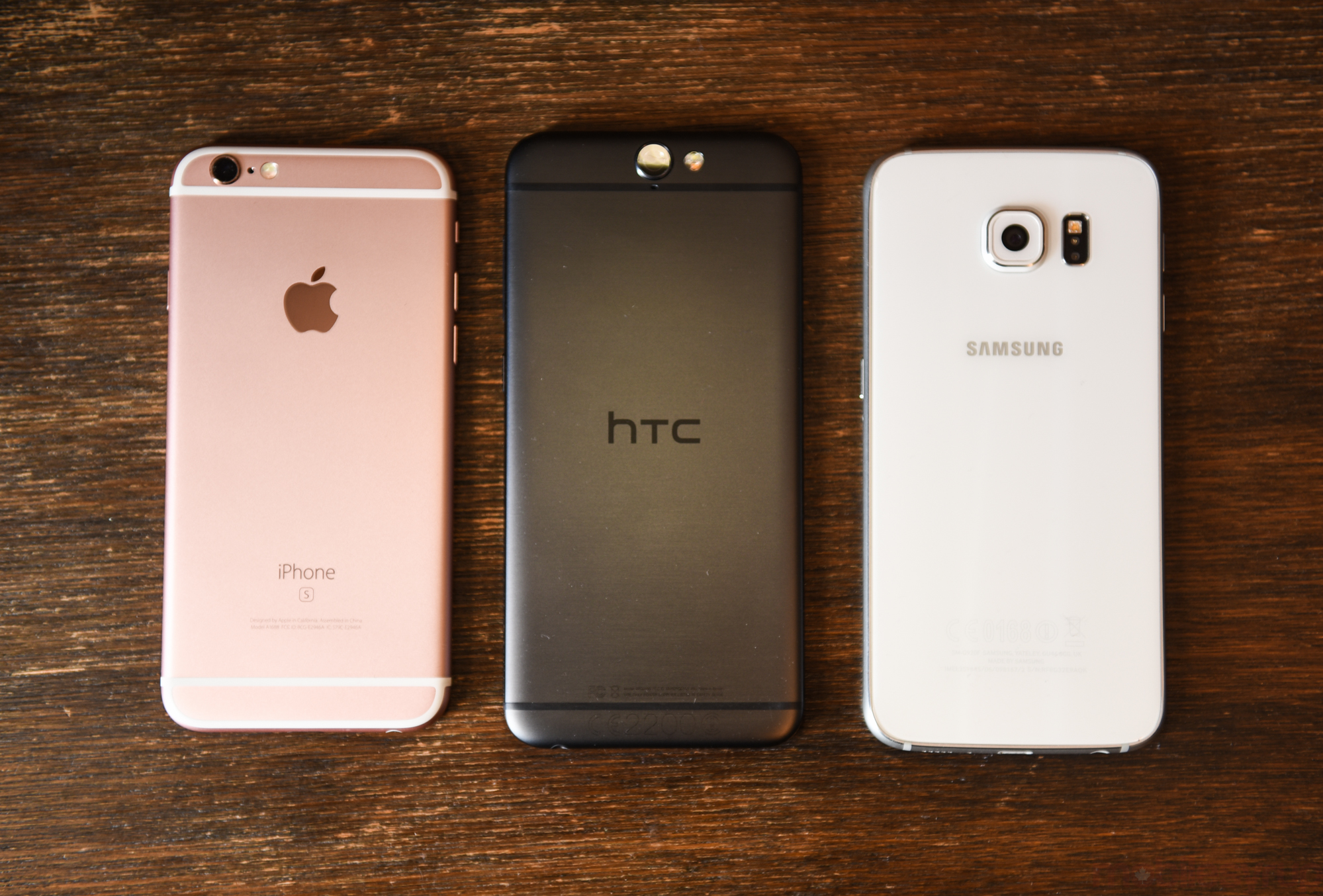
And while HTC products independently featured antenna stripes, curved glass and aluminum frames before Apple unveiled the iPhone 4 in 2010, it’s difficult to believe an organic mashup of the One M7 and Desire 816, to name a few options, would create a device with a resemblance this striking to Apple’s existing design — a design that, coincidentally, managed to sell hundreds of millions of units last year.
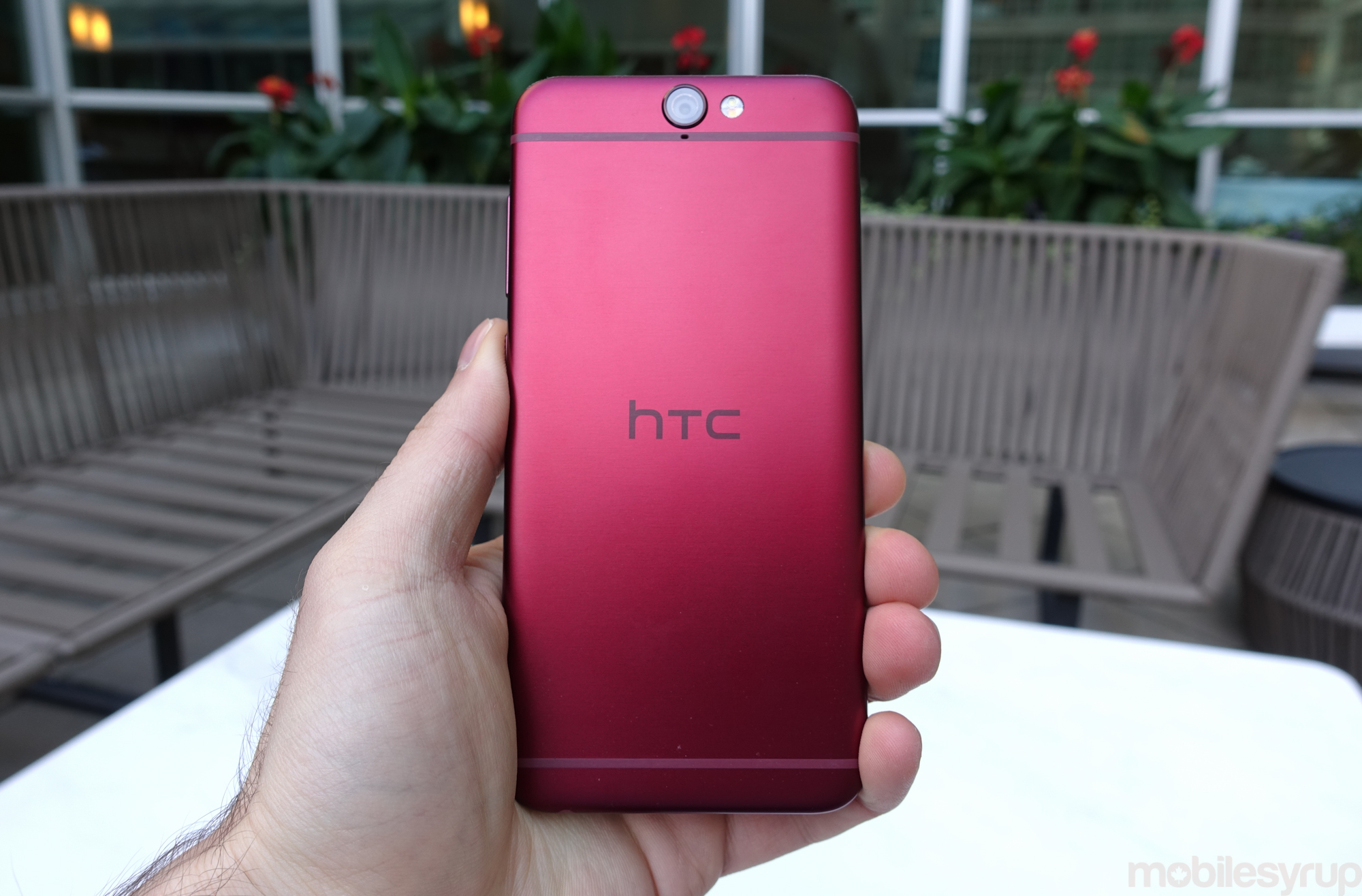
Design
With those points in mind, let’s peruse the device on its own merits. Featuring a five-inch 1080p AMOLED display, the screen is beautifully saturated and sufficiently bright to take on devices in its category. While HTC doesn’t have extensive history with AMOLED panels, it worked to ensure that it obtained the highest-quality part, in line with the Super LCD panels from its One M series. Not only does HTC tune the panel properly, offering two calibration choices in settings, but AMOLED’s inherent perfect contrast fit really nicely with the all-black face of the graphite model I tested.
Below the display is a fingerprint sensor, one of the first aside from the Nexus 5X and 6P to align with Marshmallow’s built-in biometrics API. The unfortunate situation for HTC is that the fingerprint sensor exists alone under the display, since unlike Samsung, or to a lesser extent OnePlus, it does not employ capacitive buttons. The presence of a front-facing fingerprint sensor was also the reason for the elimination of BoomSound speakers, the precious and critically-acclaimed dual front-facing speaker setup so lauded throughout the industry.
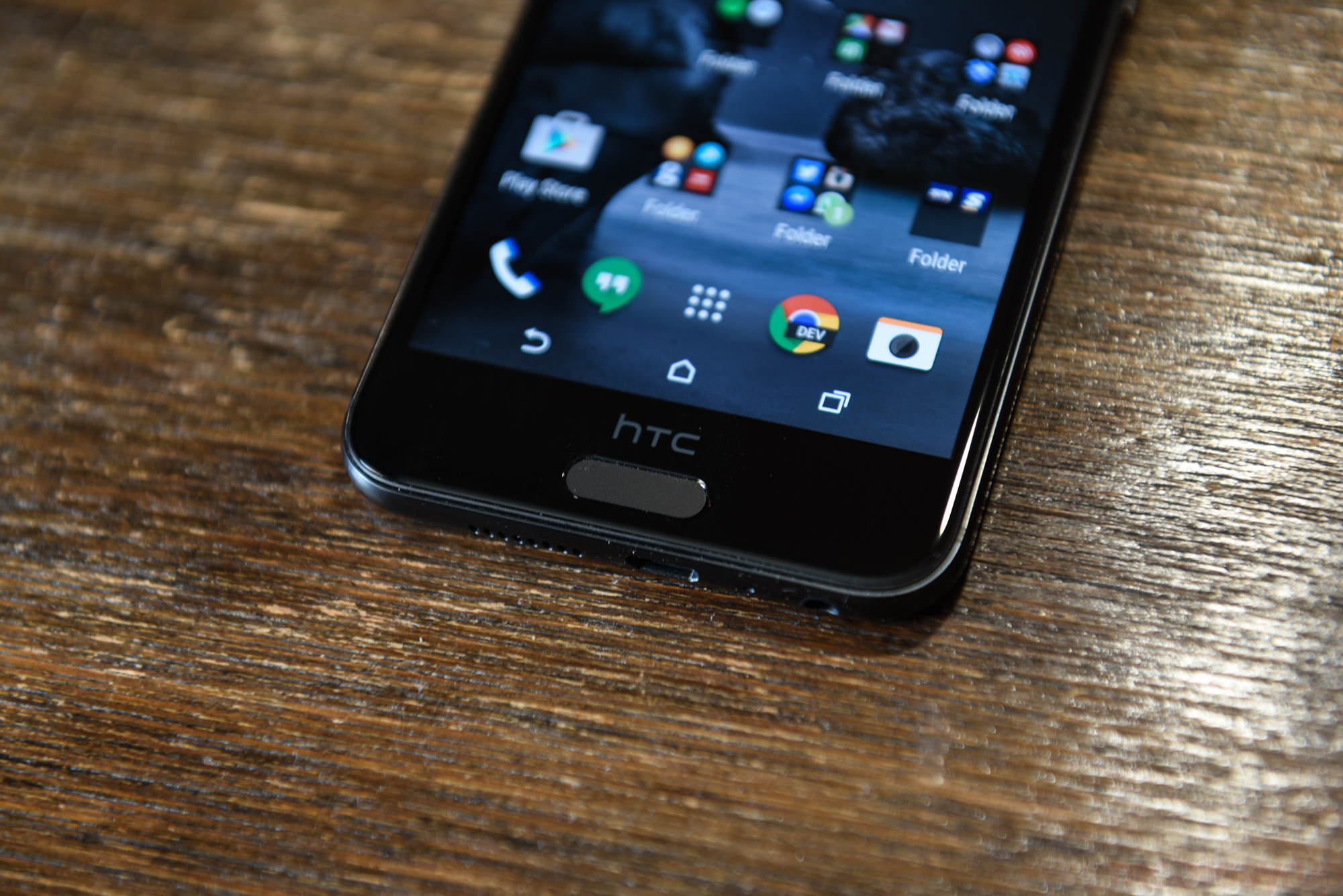
The fingerprint sensor does work as a home button (and nothing else) as an alternative, and it also performs its duty when the screen is off, a welcome feature that conspires to overcome some of the more awkward user experience issues with biometrics to date. It’s fast and accurate, and more or less does the job.
Omitting front-facing speakers also keeps the phone’s height to a relatively manageable length, making the One A9 considerably more one hand-friendly than either the M8 or M9 while ensuring the screen size remains competitive with other flagships. Indeed, looked at from the front the device doesn’t really appear to resemble an iPhone; adjust its angle slightly, though, and the uncanny valley kicks like an agitated colt.
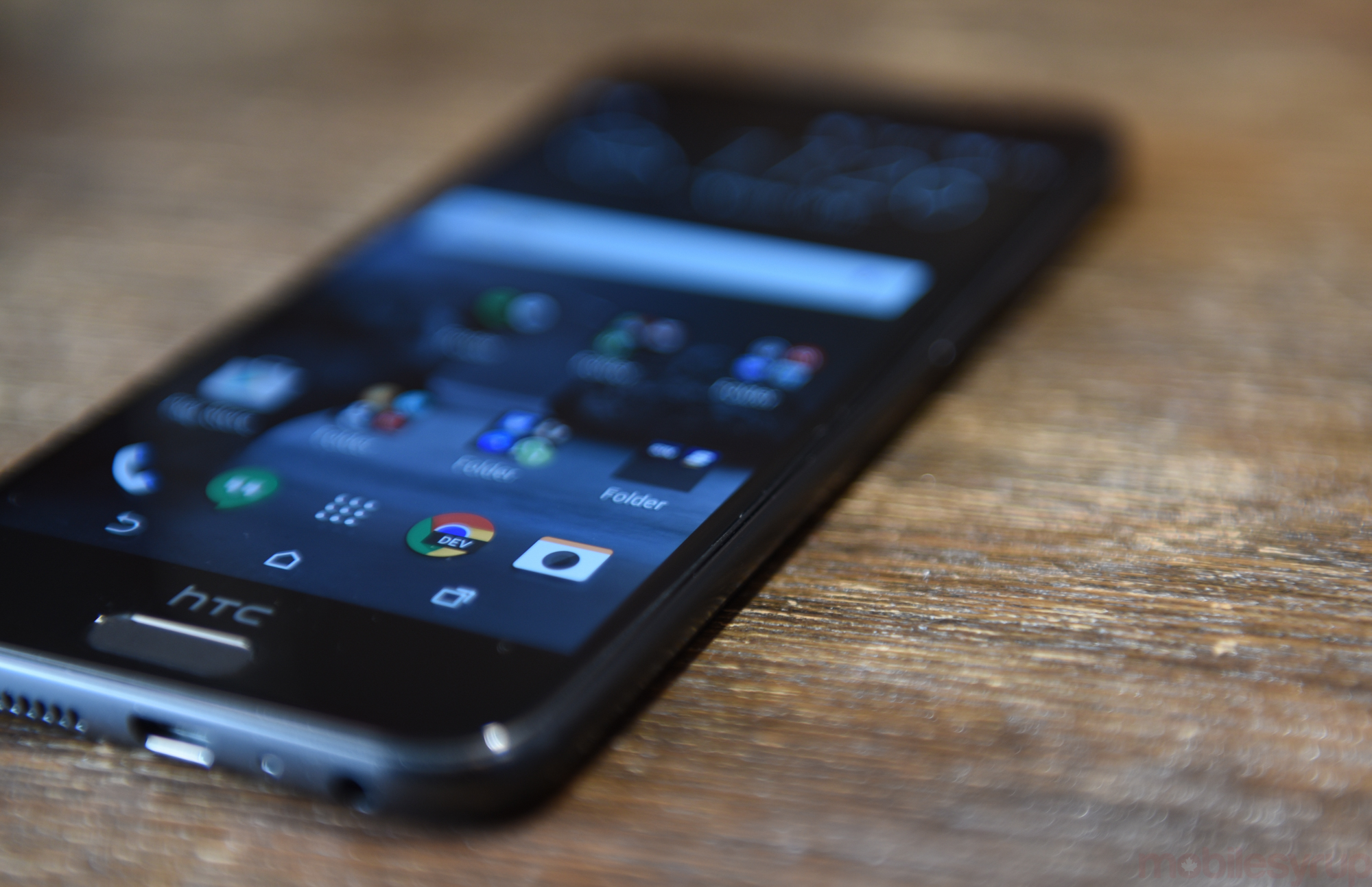
The Gorilla Glass 4 covering the AMOLED display curves to meet the sloping aluminum sides. The anodization has an iPhone-like sheen impressive in its commitment. And while neither the power nor volume buttons rest in the same position as the iPhone — they’re both on the right side, whereas the iPhone places the delineated up-down buttons on the opposite side — they are just as well-calibrated.
Around back, the antenna lines, though fewer and less severe, encompass a protruding camera sensor and dual-tone LED flash, with a minimal HTC logo in the middle. The camera placement, centred, is certainly preferable to the off-the-side iPhone, risking some battery real estate in the process, but it is that design that reeks the most of HTC’s newfangled commitment to Apple’s design language.
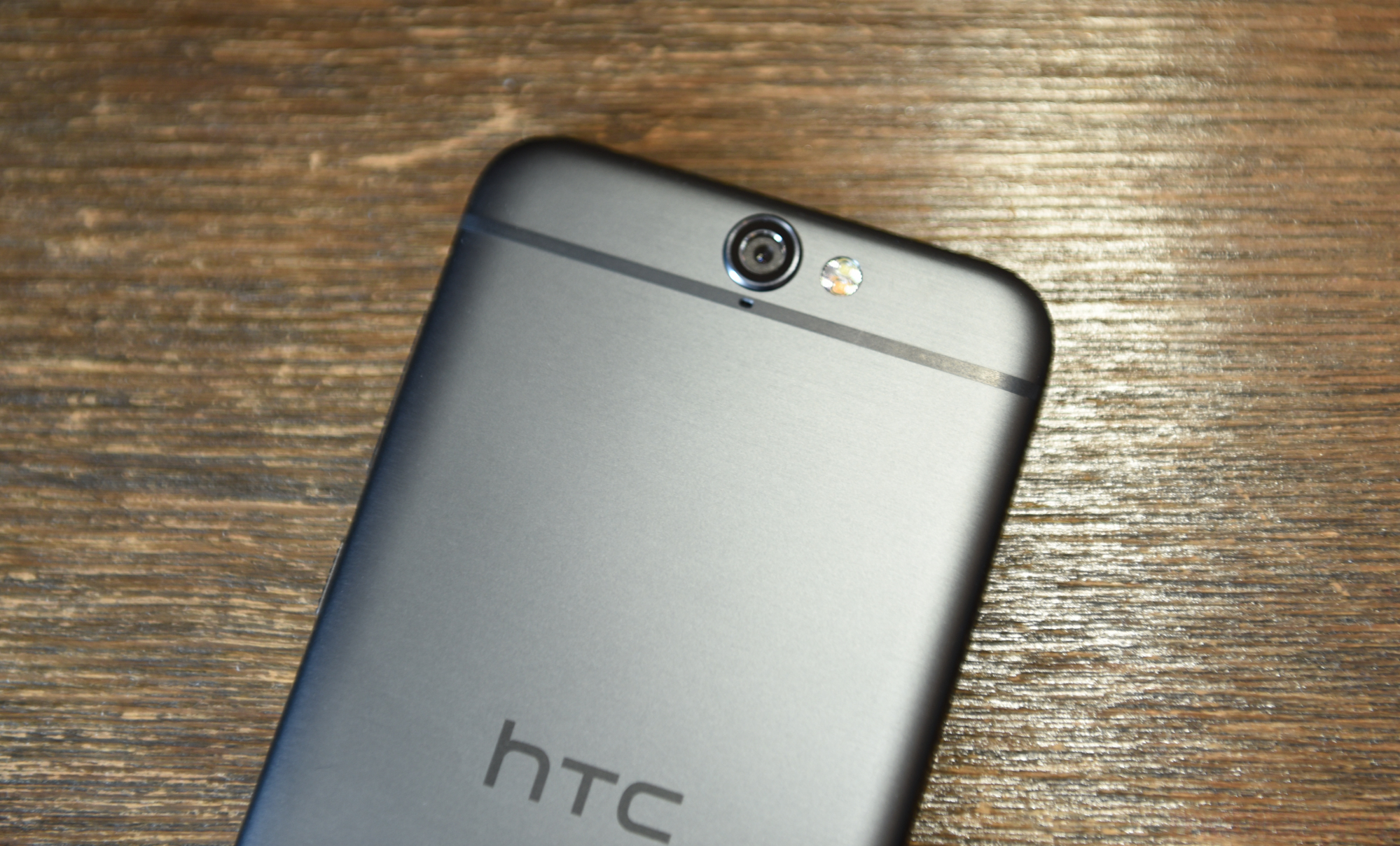
None of this is inherently problematic unless one takes umbrage at design theft without looking at legacy. The iPhone happens to be the world’s single most popular phone, but there are elements of its pedigree informed by other companies.
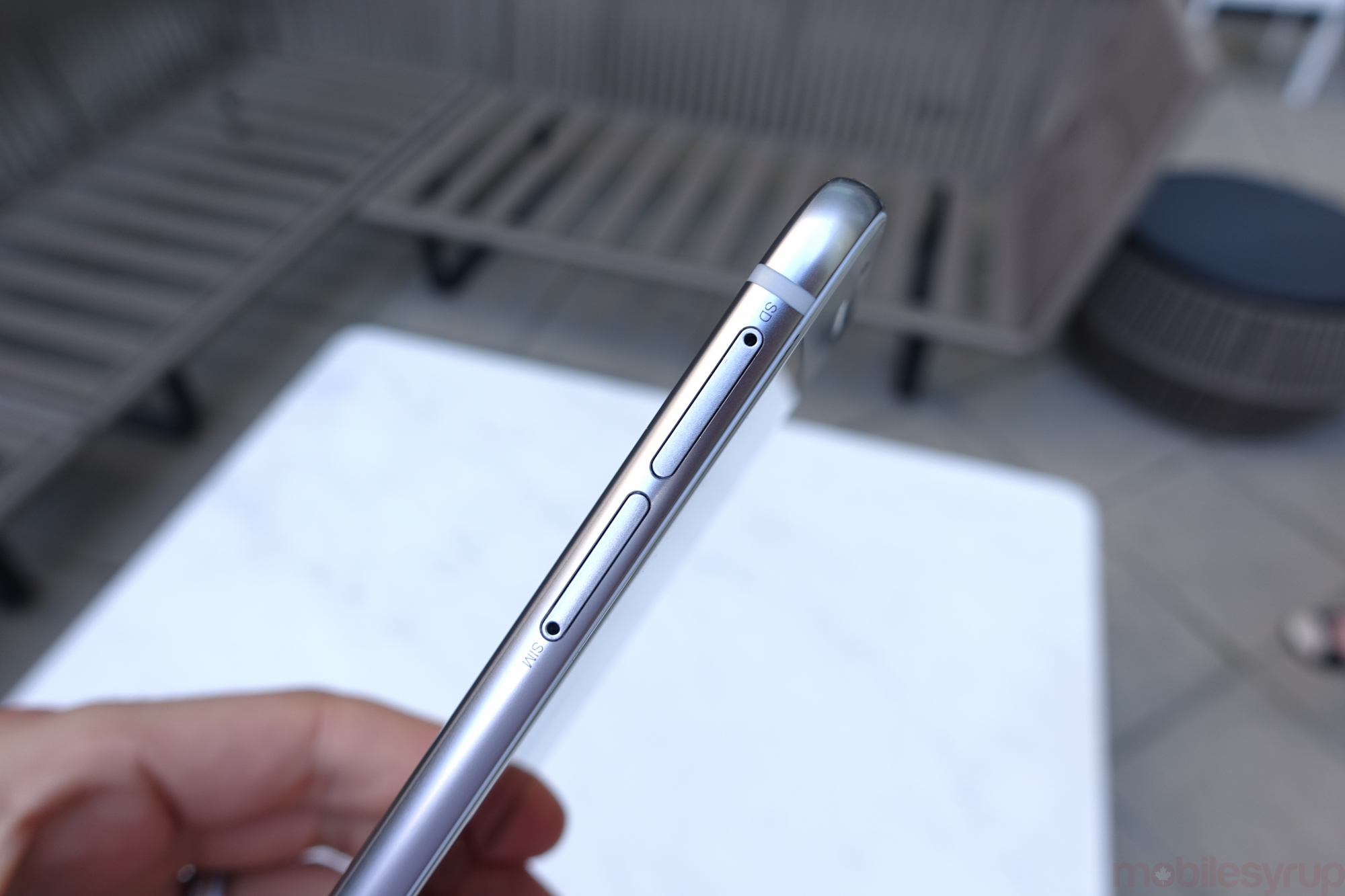
Hand feel and other niceties
Without getting too deep into the weeds (we’ll save that for the full review, coming very soon), the One A9 feels an awful lot what I think a phone should. It’s easily usable in one hand, with the right balance of height, width and thickness.
And in what will likely be something one doesn’t realize until using it, the A9 has a distinct hand feel advantage over the iPhone, in that its rear bezels — where the sides curve to meet the back casing — are slightly sharper than Apple’s products, making it more comfortable and less slippery to grip. When I hold the phone in my right hand, my middle finger naturally wraps around the left edge, forming a natural silo in the palm — an area where the iPhone 6 and 6s regressed from the boxier iPhone 5 and 5s.
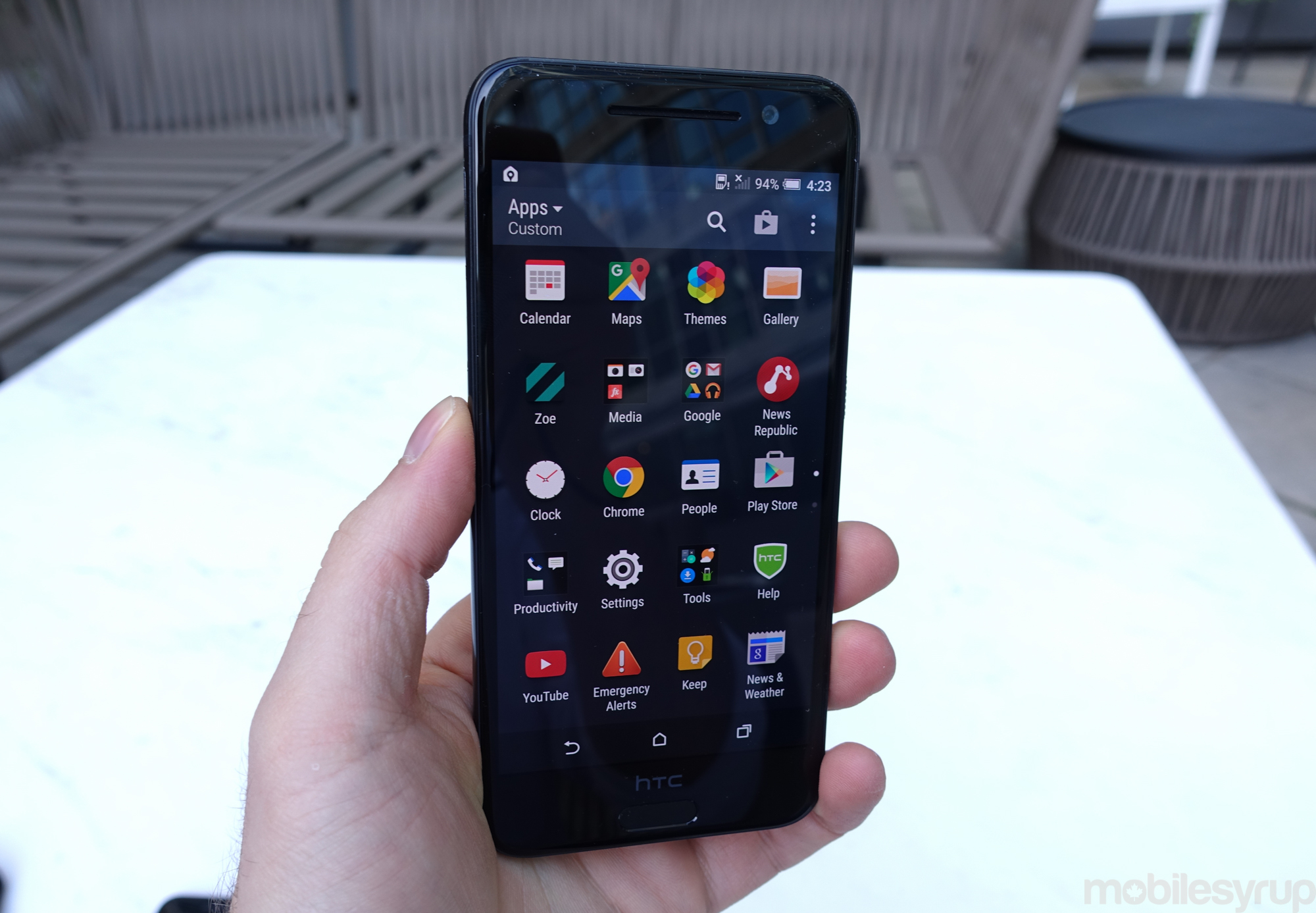
Software
The One A9 runs Android 6.0 Marshmallow, the first device outside the Nexus ecosystem to do so. Along with native fingerprint support, Marshmallow is significantly faster and more battery-efficient than Lollipop, a nice bonus on a device that has a relatively small 2,150mAh cell.
HTC claims that it worked with Google to shed some of its software excess — duplicated apps, unused widgets — to lower the amount of space taken up by the system ROM.
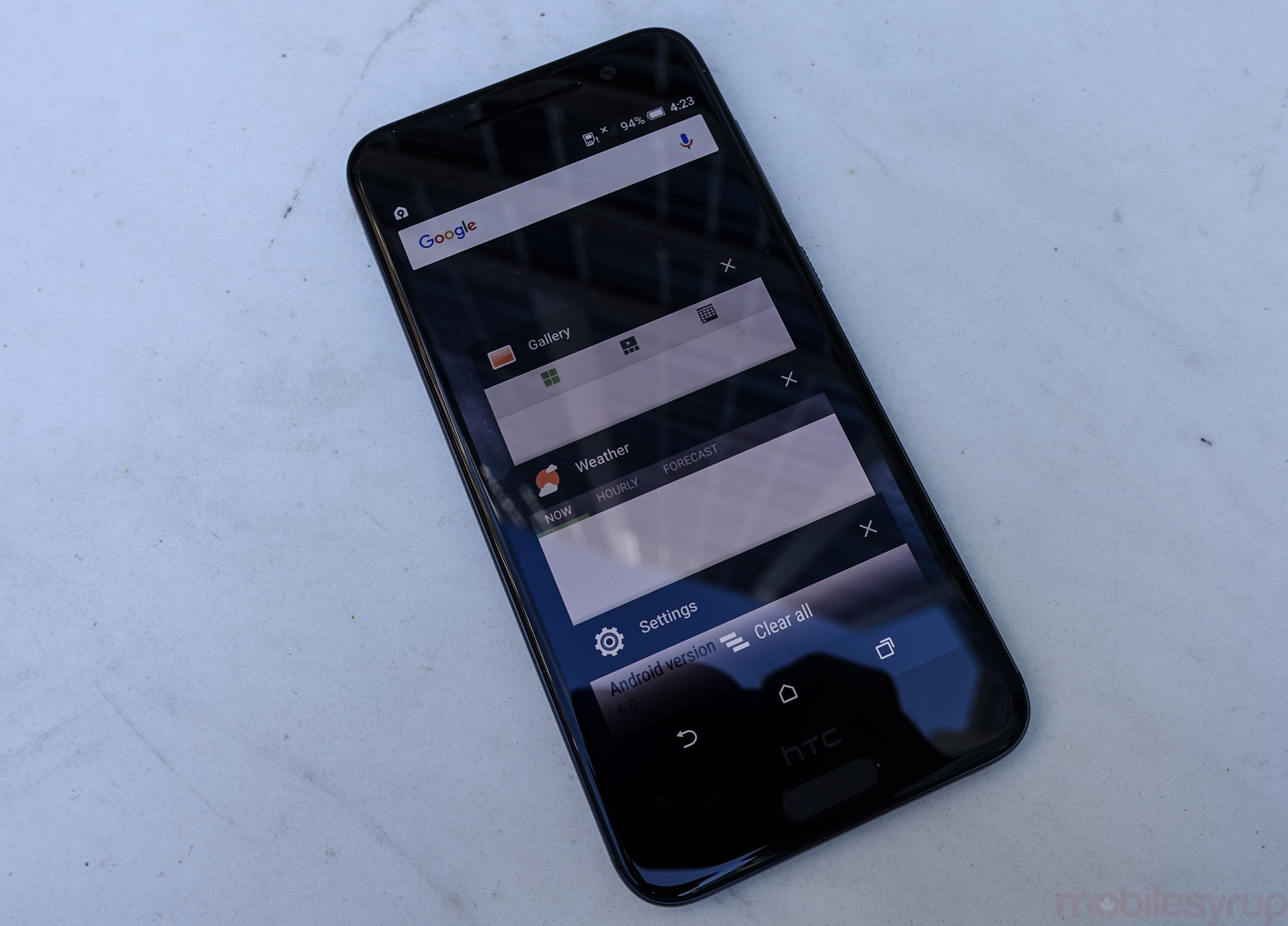
In doing so, the company is moving towards a semblance of what we consider “stock” or pure Android, though at first glance the UI looks remarkably similar to previous versions of Sense. Indeed, HTC intends to ship the One A9 in Canada without a self-branded browser or mail client, the former of which will be lauded while the latter will be derided by enthusiasts unhappy with Gmail for Android’s pitiful Exchange support.
Strangely, the company still ships separate Photo Editor and Gallery apps despite the presence of Google Photos, which does an admirable job as both (though the Gallery app is attached to the Camera app, which HTC still excels at).
The version HTC is selling direct to consumers (Canadians included) also features an unlockable bootloader that won’t void one’s warranty, and promises to push out new versions of Android no more than 15 days after it hits Google’s own Nexus devices, a huge improvement over the current state of Android software updates.
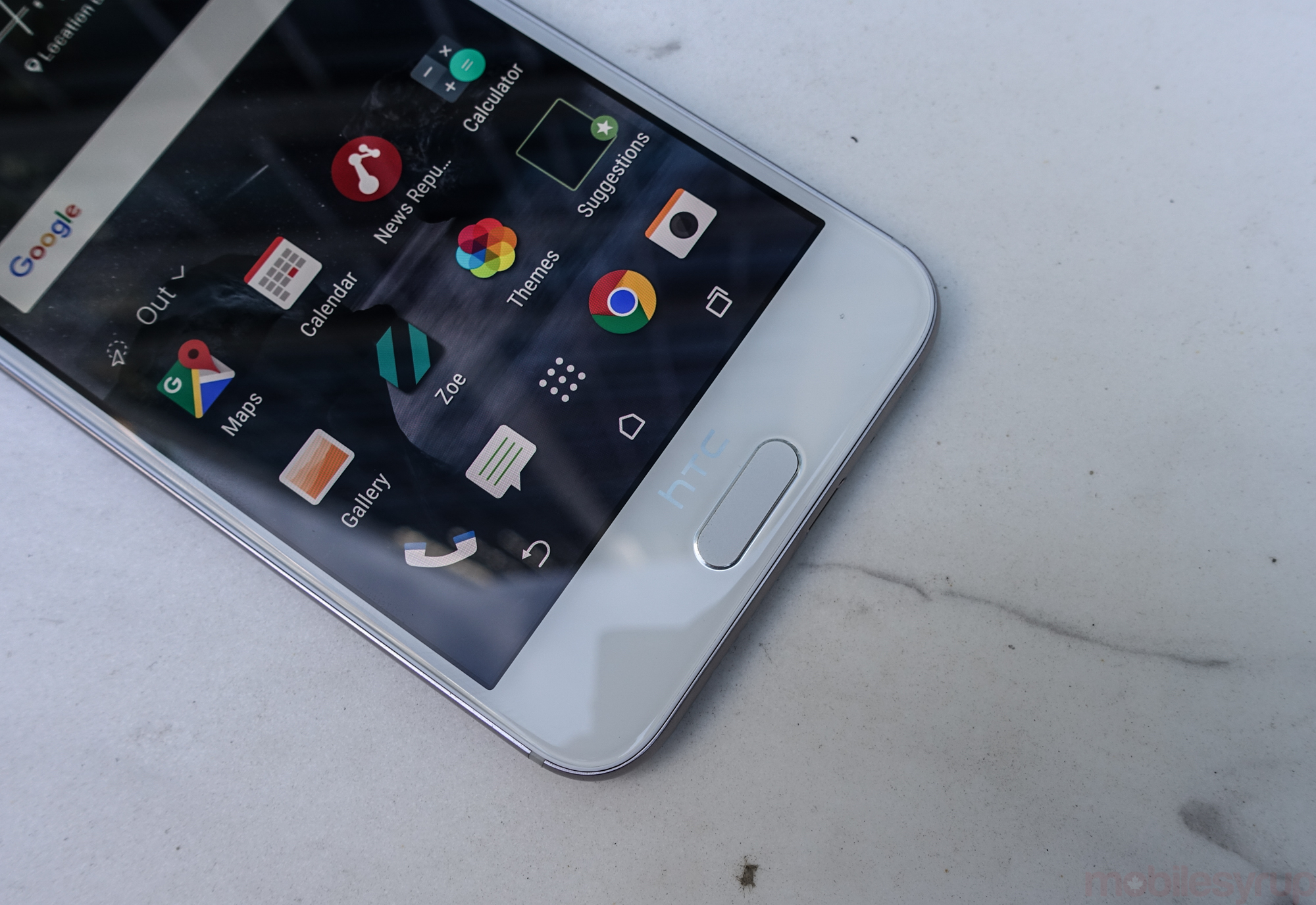
While the big new feature in Marshmallow is Now on Tap, HTC is still bundling some of its own features to differentiate from the rest of the Android ecosystem. Motion Gestures are thankfully still around, making it easy to launch the camera by tapping a volume button while the screen is off and the device is in landscape mode. Also present is the universal three-finger swipe gesture, which quickly connects to any audio device nearby. Along with Marshmallow’s improvements to Storage, Battery, Memory and App Permissions, HTC has retained its highly-touted theming engine, which allows users to skin nearly every aspect of their device’s UI.
Finally, BlinkFeed and Zoe are still here, the former built into the Sense Home Launcher and the latter integrated into the camera app and accessible through a separate app. While HTC will claim that Zoe did Live Photos before, and better, than Apple, the truth is that the feature, which adds a few seconds of motion to a photo, is neither well integrated nor thoughtfully designed, and will continue to have minimal market impact.
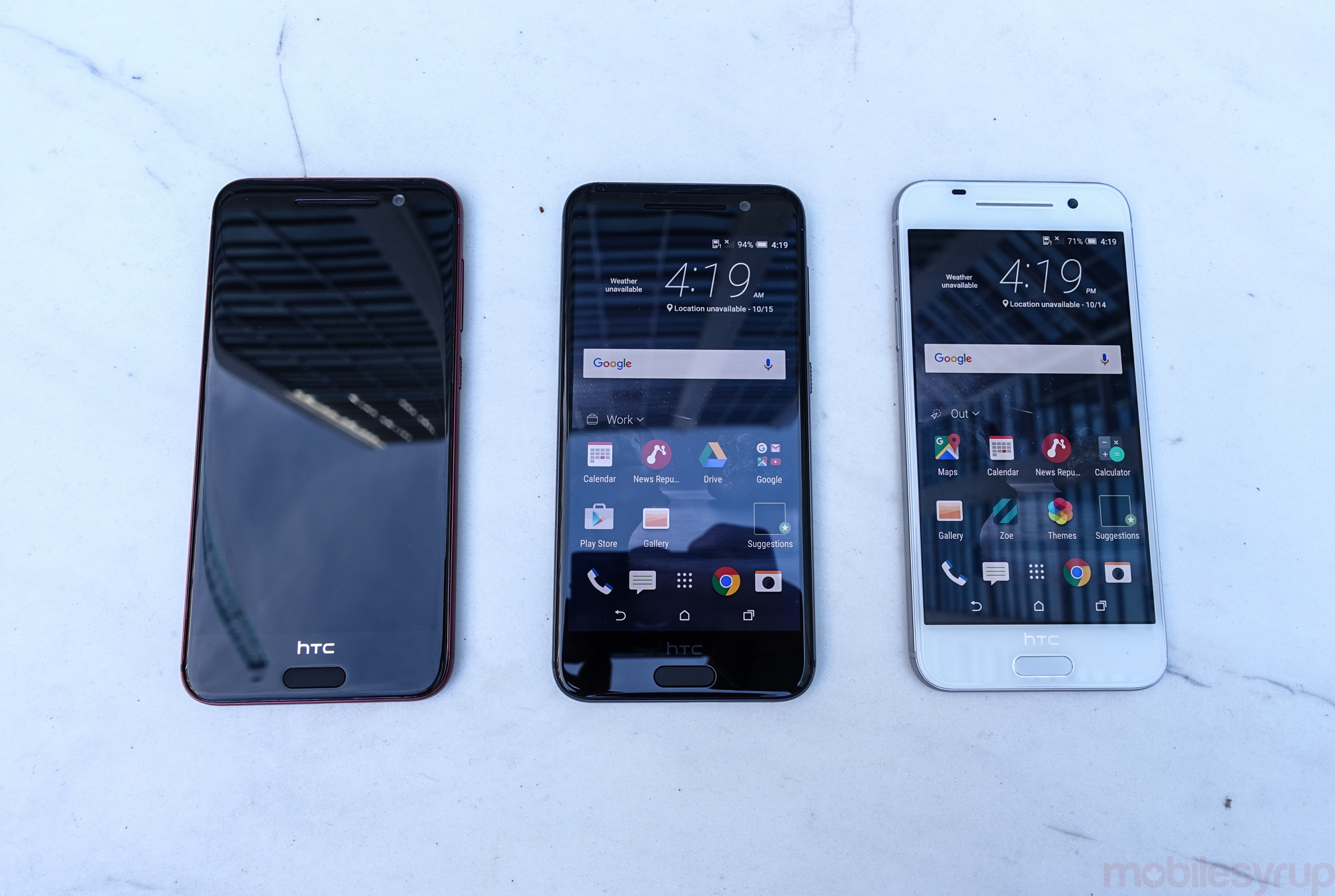
Performance
HTC is calling the One A9 its new flagship, though it ships with a fairly stingy Snapdragon 617 SoC along with 3GB of RAM and 32GB of expandable storage. The company says the choice was made to keep costs low and to ensure customers had a great, efficient experience, but when the Nexus 5X, which is just $10 more, ships with a Snapdragon 808 you have to question HTC’s logic.
A minor successor to the Snapdragon 615, the 617 features eight Cortex-A53 cores, four clocked at 1.5Ghz and four clocked at 1.2Ghz, along with an unchanged Adreno 405 GPU. There are two areas where the Snapdragon 617 succeeds its predecessor: memory speed (and bandwidth), and LTE compatibility. The new chip boosts LPDDR3 RAM speed to 933Mhz from 800Mhz, and the Snapdragon 617 supports Category-7 LTE speeds up to 300 megabits, with support for 2 x 20Mhz Carrier Aggregation.
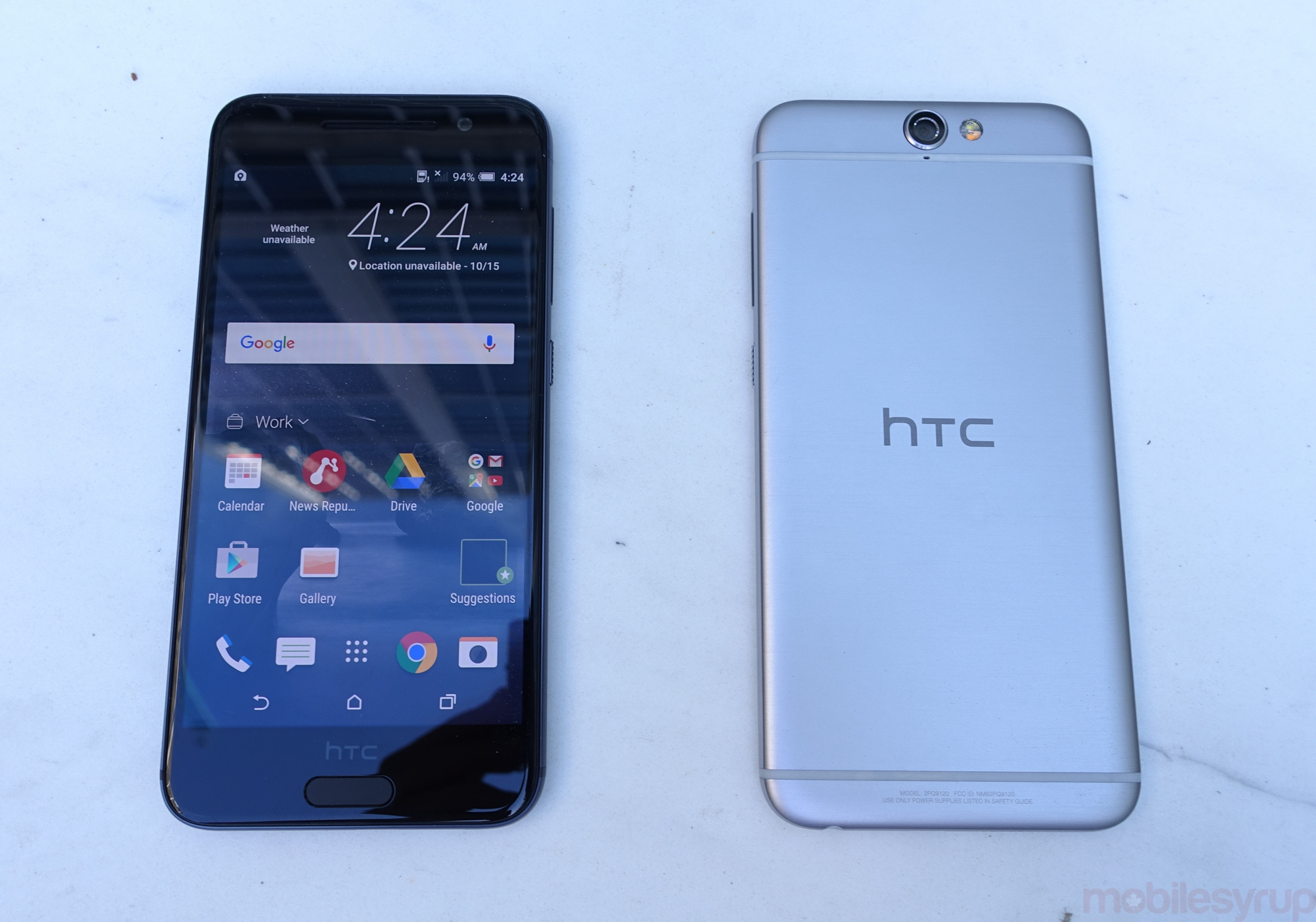
In our brief tests with the phone, the A9’s performance shone despite the reduced compute power from the M9’s Snapdragon 810; HTC has always gainfully optimized its hardware compared to other OEMs and outside of a few slowdowns in heavy 3D games I didn’t notice a significant deficiency in processing speed. But it should be noted that aside from the small changes listed above, the A9 is running the same chip as the $420 Moto X Play and $360 Alcatel OneTouch Idol 3. That said, for the $130 premium over the Moto X Play you get a nicer AMOLED display, an extra gigabyte of RAM, double the storage, a fingerprint sensor and, at least for now, a significantly improved software experience with Android 6.0 Marshmallow.
In lieu of BoomSound speakers, HTC has worked with Dolby to add support for 24-bit Hi-Res audio, while the internals boast a new DAC (Digital-to-Audio Converter) that promotes cleaner, richer output, and a more powerful amplifier to push higher impedance headphones.
The device also supports Quick Charge 3.0, though it is only shipping with support for the current QC2.0 standard, with a software update expected to roll out in conjunction with new charging hardware.
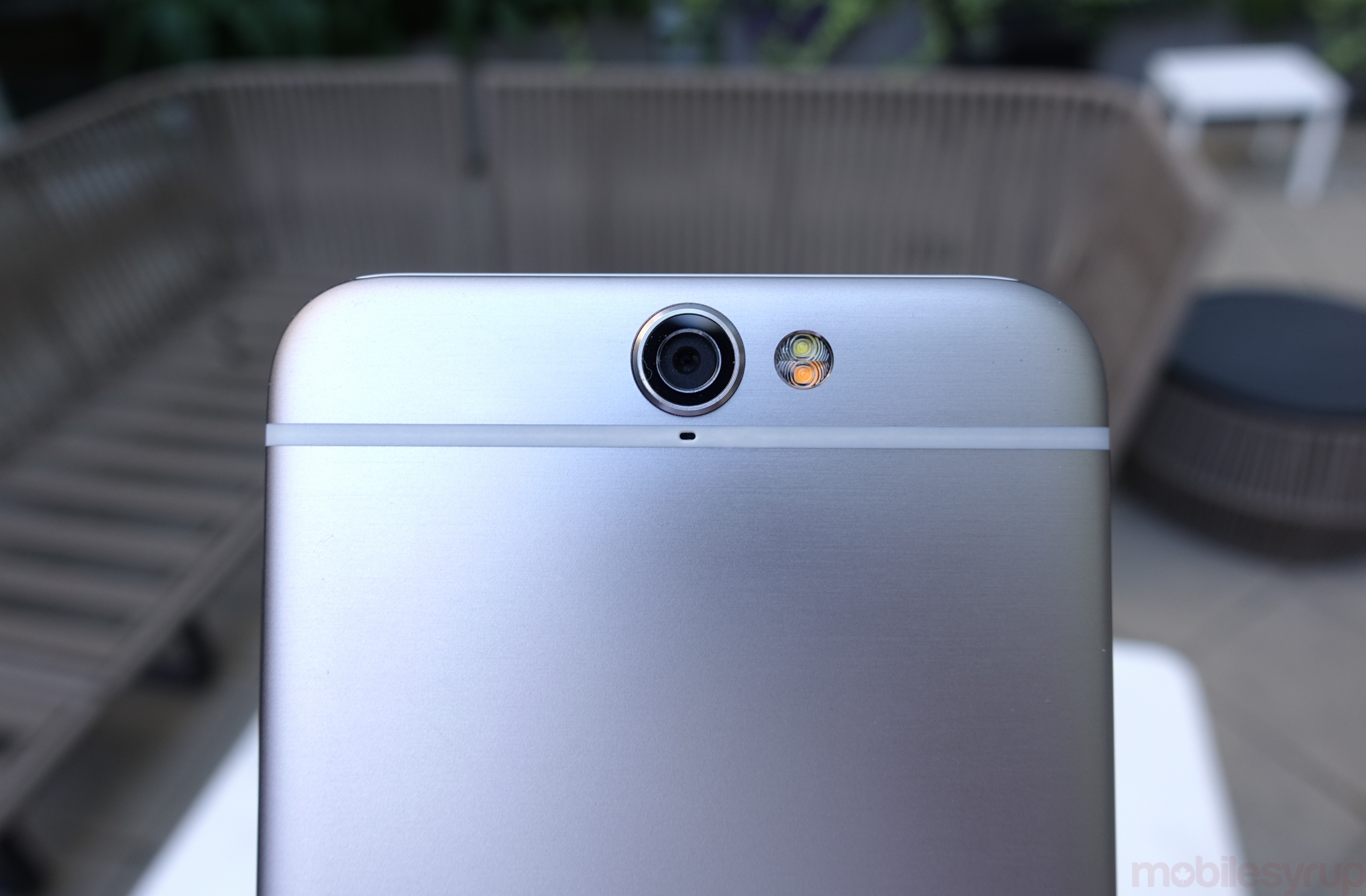
Camera
Finally, while we’re not going into depth on the camera today (that will come in the full review), HTC is taking its sensor game seriously this time around. Reverting to a milder 13 megapixel resolution from the 20 megapixel catastrophe of the One M9, the A9 features optical image stabilization and support for 1080p video capture, time-lapse capture, and 576p slow motion capture.
On first impression, the camera is a significant improvement, especially in low light, over the M9, but the sensor — which I believe is manufactured by Toshiba — lacks the size and resolution to compete with Samsung, LG and Sony’s latest flagships. Indeed, it will be interesting to see how it compares to the OnePlus 2 or Moto X Play, devices that have proven to be consummate performers in their mid-$400 price ranges.
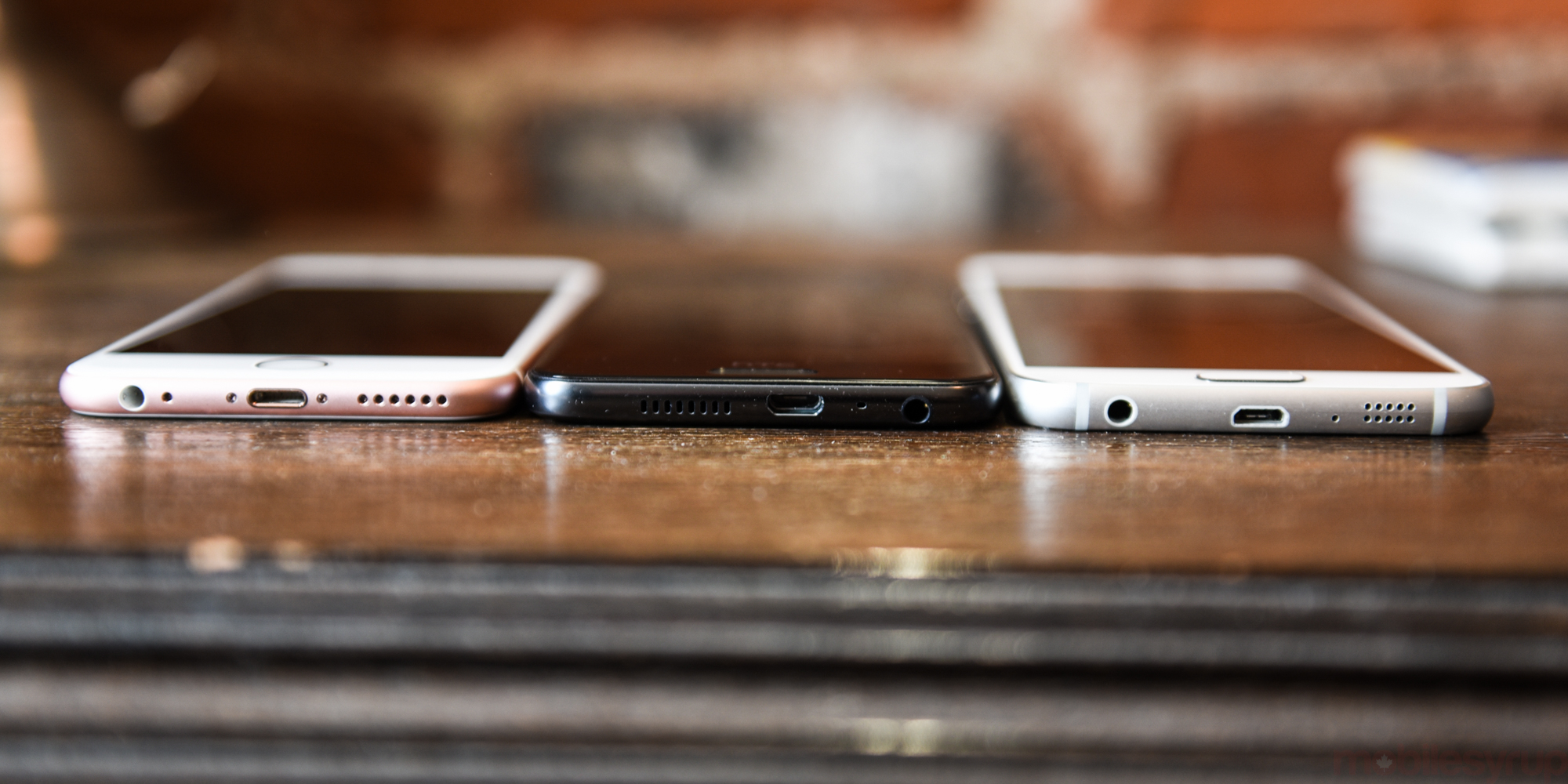
Legacy
The One A9 is a really nice phone, made of CNC-machined aircraft-grade aluminum and a considerable amount of engineering talent behind it.
And while HTC isn’t the same company it was three years ago, there are plenty of employees that, upon embarking on the quest to refresh the One line beginning with the A9, must have seen the inevitability of these iPhone comparisons.
In many respects, the One A9, at $549 CAD, is one of the better Android devices out there today. It’s well-balanced, usable in one hand, with enjoyable software and performance that peaks above its Snapdragon 617 weight.
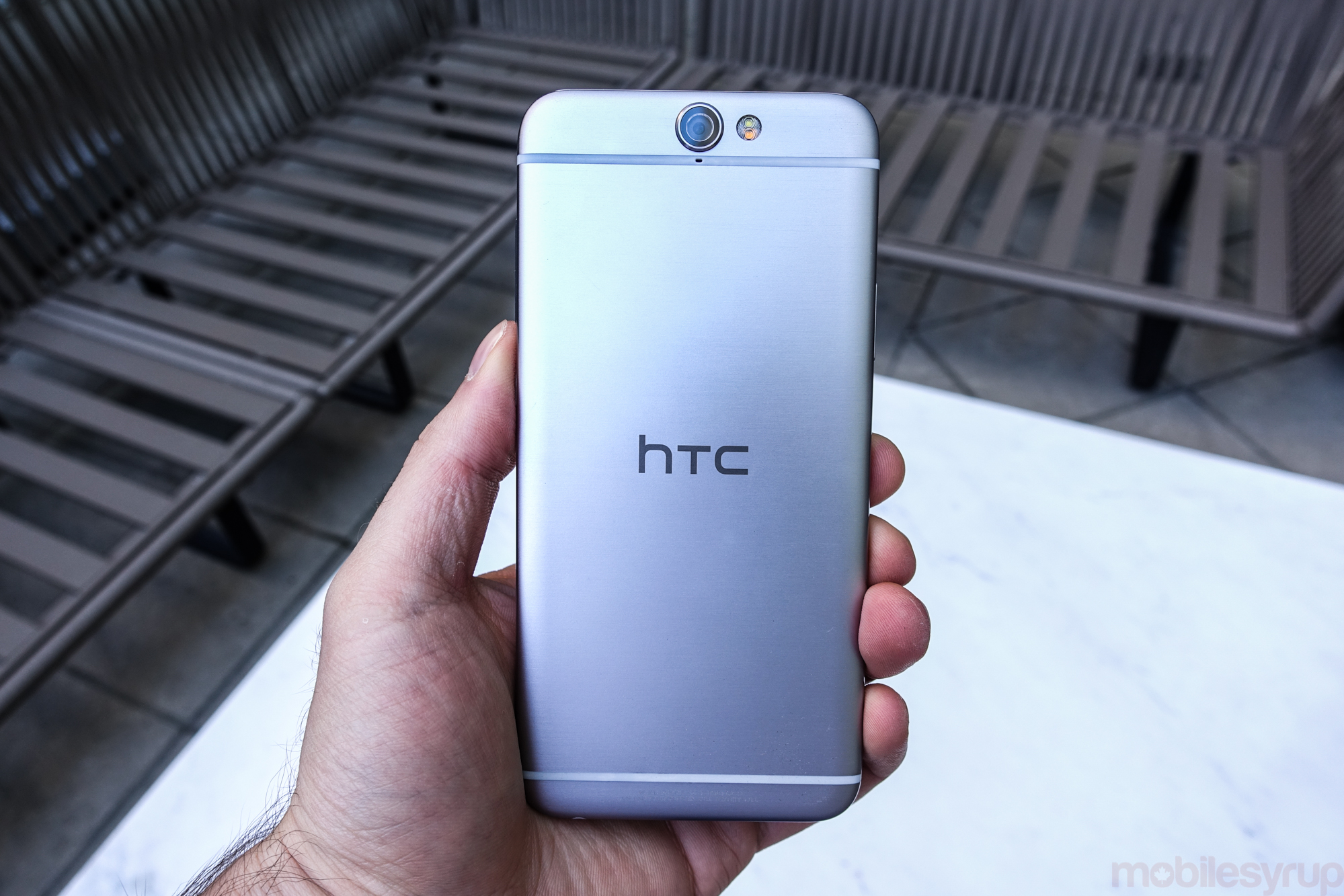
Over the years, many Android users have claimed to want an experience close to, or at least in the vicinity of, the iPhone. Well, here it is, courtesy not of some knock-off brand but a company we know and trust. I can’t decide whether the One A9’s existence breaks that trust or reinforces it — it depends a lot on how you frame companies’ tendencies to borrow and mimic the industrial designs and fashion trends of the day — but on its own merits HTC’s new smartphone succeeds in some areas its predecessors have not.
Whether consumers warm to HTC’s choice remains to be seen.
And at least Canadians can buy this one without a contract, unlocked, directly from HTC. If nothing else, that’s a step in the right direction.
MobileSyrup may earn a commission from purchases made via our links, which helps fund the journalism we provide free on our website. These links do not influence our editorial content. Support us here.


